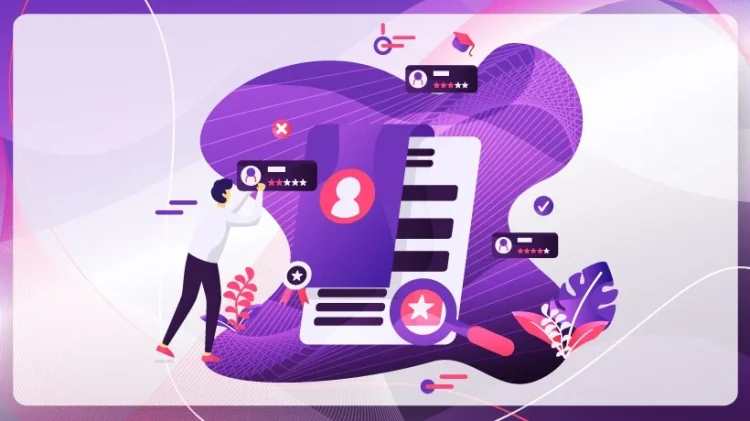Onboarding is the process of introducing and integrating new employees into a company. It involves taking new workers through a smooth transition into their roles in the company. During this time, workers are provided with information about salaries, benefits, company policies and procedures, and the required paperwork to complete, among other things.
Onboarding is an ongoing process within the initial stages of employment until the worker feels comfortable discharging their roles. It’s a crucial process to go through as it determines the worker’s success in their experience at the company. HigherMe is one of the go-to resources that can help with proper onboarding.
Together with onboarding challenges and how to overcome them, this article will also highlight what it entails and its benefits.
Page Contents
What Onboarding Entails:
Employment Terms And Conditions

Source: youtube.com
Employment terms and conditions include vital information like the time the worker reports and leaves work, their compensation, wages, and benefits, a signed contract of the rules and guidelines they’re expected to follow, and an explanation of all the paperwork required to be completed. You can also visit this page to know more.
Work Location
The new worker will be informed about their work arrangement: onsite, hybrid, or remote. They will also be given the address of the office or field where they should report. They will also be assigned to a specific department.
General Introduction To The Company
It’s the HR manager’s role to introduce a new worker to their immediate supervisor, other department leaders, and colleagues both within and in other departments. At this point, the reporting structure is also communicated so that the worker is clear about the chain of command from their immediate supervisor to the company’s Chief Executive Officer (CEO).
Roles And Responsibilities
The new worker is taken through their job description, where they get to know what they’re expected to do daily, their targets and expected outcomes, and to whom they report.
Company Policies And Procedures
The new worker is taken through how they’re expected to behave at work, dress codes, how to address grievances, and other aspects that make up the company’s culture. The worker can also be provided with a company handbook to help them with the onboarding journey.
Benefits Of Onboarding:

Source: infoprolearning.com
- It lays the foundation for the new workers’ future success by getting oriented to individual and team dynamics and the company’s workflow.
- It describes to the new workers the value of their input to the company.
- It reduces the time it takes for a worker to reach full productivity.
Onboarding Challenges And How To Overcome Them
Too Much Information On The First Day
There’s a lot that new workers are expected to learn as soon as they begin working. Most of the time, this can overwhelm them and lead to confusion along the way. Information is best shared in small portions within a given period. That makes learning easier and achievable. It also helps a great deal to introduce online learning where the worker can access all information they’re expected to learn anytime. This way, they can plan their own time to get themselves oriented to the company.
Expecting The New Worker To Learn Everything At Once
Imagining that new hires will learn everything required of them by the day they start working is a wrong assumption. The worker should be engaged continuously through the first six months so that they can retain the information and become better workers. This can be achieved through interactive training sessions and the provision of learning materials like videos for the workers and tests to evaluate themselves.
Ambiguous Goals And Expectations

Source: knowledge.wharton.upenn.edu
New workers will likely be confused about the overall and individual goals and expectations because of how they’re presented to them. The HR manager should take the worker through the company goals and expectations and how they will contribute to achieving them as they discharge their duties. On the other hand, immediate supervisors should ensure that new workers clearly understand their roles by defining each of them comprehensively.
Lack Of Involvement By The Manager
When the worker and the manager or their immediate supervisor don’t relate well, it creates strain at work. The immediate supervisor must be present in the worker’s life at work. They should continuously share feedback with the workers concerning their performance and how to improve and become better. This is crucial for the new workers and as they go along in the first three months. It gives them confidence in discharging their duties as required of them.
Not Prioritizing Employee Onboarding
Many companies think about onboarding only when they have to hire workers, and because of this, very little time is dedicated to the process, and the planning is haphazard. One of the strategies for companies to remain competitive is the ability to attract and maintain talented workers. This is made possible by investing in the onboarding process and having a detailed plan well in advance before hiring.
Overwhelming Paperwork
New workers are expected to complete a lot of paperwork in the first few days after they report to work. This can be overwhelming when combined with other onboarding processes. The company should have an arrangement for all paperwork to be slotted in the preboarding process. This will make it easier and more manageable for the worker. The company should also invest in software so that most of the process is automated and paperwork is reduced and effortless.
Providing Irrelevant Onboarding Content

Source: elearningindustry.com
It’s not wise to engage a new worker with information that’s irrelevant to their role. That gives them an impression that they’re there to do more than they signed up for, affecting worker retention. The onboarding content should be specific to the new worker’s role.
Conclusion
Employee onboarding cannot be overemphasized. It should be treated as one stone to kill two birds. On the one hand, it should be a process to get a worker acquainted with their role well enough to increase their productivity. On the other hand, it should be treated as one of the strategies that a company should keenly invest in to remain relevant and competitive.





